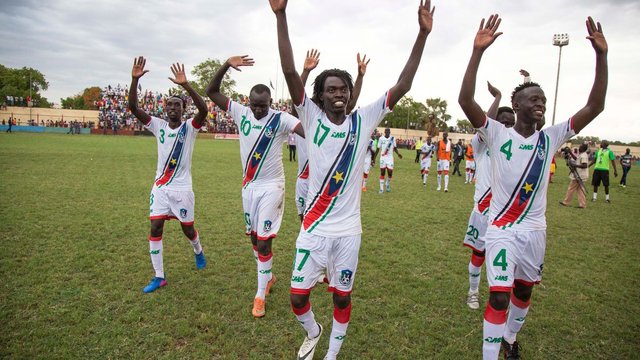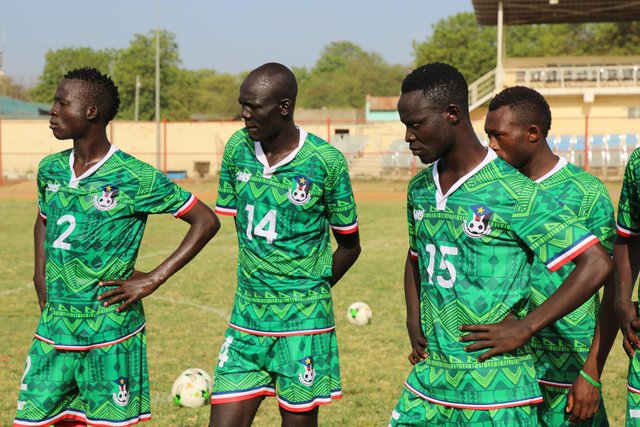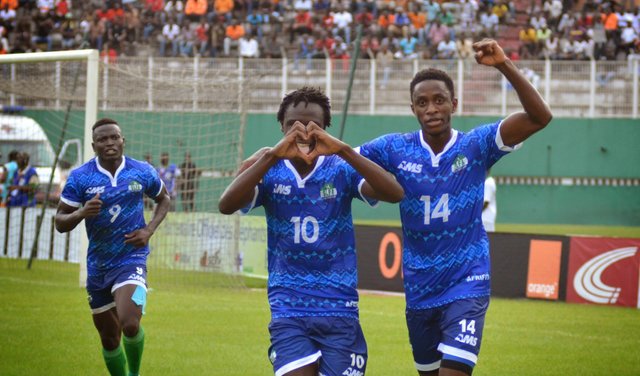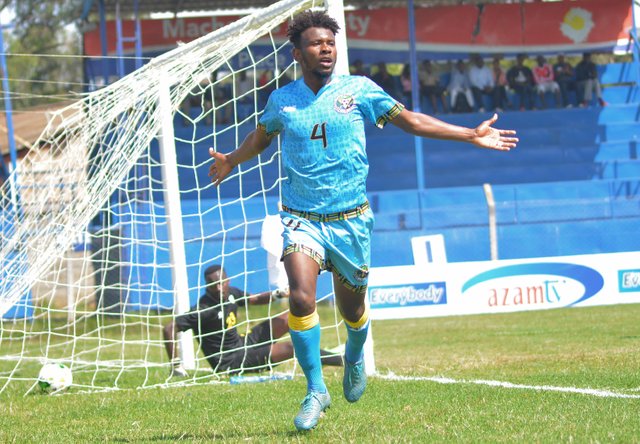
How did 23-year old Australian Luke Westcott come to play such an influential role in the national pride of divided African nations?
In May of 2014, the national football team of South Sudan hit the pitch for their opening qualifier against Mozambique for the 2015 Africa Cup of Nations.
Having finally won independence just three years prior, this match marked South Sudan’s first ever appearance in an official FIFA or CAF match and simply being included in the prestigious continental tournament was a monumental moment for the world’s newest nation. Still, the East-Central African country was riddled with a plethora of economic, political and social issues, with much of its ethnically divided population living below the poverty line.

Also making its international debut that day were the brand new jerseys that featured a complex patterned design based on the the traditional cultural symbols of South Sudan. For a region that had been dying to be internationally recognized as a sovereign nation and that was in the midst of a deadly civil war, the uniforms remained a bright symbol of national pride and a call for unity. Such an important statement, however, was designed not by the likes of adidas, Puma or Nike, who have a dominant stranglehold in the football world, but by an unknown Australian company called AMS, headed by then college student Luke Westcott.
“We saw this as a great opportunity to come up with something special and it is still probably my favourite design we have made so far,” Westcott tells LYFSTYL. “It’s allowed the national team to develop a distinct identity and showcase their nation on the world stage.”
The roots of AMS go back to a 15-year old Luke Westcott importing cheap goods from China to Melbourne and selling them to his high school peers for a quick buck. At first, he was flipping anything that would bring a reasonable profit, but he soon began to realize that the most sought-after items were also something that he himself enjoyed–football jerseys. From there, Westcott began to sell the football jerseys on eBay, and it wasn’t long before he began receiving tons of requests.

He was quickly surprised, however, with how many special requests there were for kits of obscure African national teams. The catch was that many of these teams didn’t have any official suppliers, making designs next to impossible to find. This is when a daring and opportunistic Westcott saw a demand on the football-crazed continent and decided that he would try to satisfy the market.
Westcott initially set out to target some of the lower-ranked FIFA nations like Somalia and Eritrea, however, the first national team to jump aboard and commit to AMS kits was South Sudan. Westcott managed to reach the South Sudanese football association president via Facebook and he was willing to give the college student a chance, but there was one catch. Between concepting the designs to finding a manufacturer, AMS had just three days to figure things out to get the kits delivered on time.
“Thankfully it all worked out, but the quality of the kits were pretty terrible,” Westcott admits with a chuckle.
Since living up to the challenge, AMS has since formed a longstanding relationship with the South Sudan Football Association. The Melbourne-based company now finds itself as the exclusive supplier for the country’s national team, as well as the majority of the clubs in the South Sudan football league. Soon AMS will be supplying every state team in South Sudan.

"The mission is to make a design that is instantly recognizable as being a uniform for each individual country."While Africa’s top football countries like Egypt, Cameroon, Ivory Coast, Nigeria, Ghana and South Africa offer enough commercial potential and brand exposure to warrant sponsorship deals from sportswear giants adidas, Puma and Nike, many other impoverished and war-torn nations are often not even of their radar. A few middle-of-the-pack teams warrant just enough attention to land secondary sponsors from mid-brands like Uhlsport, Macron and Airness, but no one dares to venture into the rest of Sub-Saharan Africa, which is seen as economically unstable with war-ravaged markets and political uncertainty.
“The majority of consumers in these markets cannot afford products from these brands and the brands will never reduce their prices to meet market demands,” Westcott explains.
It wasn’t long before other low-ranked African national teams began to take notice of the widespread success and popularity of AMS’ kits in South Sudan and more attention began coming their way. Each new region had their own history and struggles, and football truly plays much more of a cultural and unification role among these populations that are often struck by famine and torn apart by conflict.
“The mission is to make a design that is instantly recognizable as being a uniform for each individual country. Most national teams in Africa wear generic teamwear kits without any real design features relevant to that country,” Westcott says.

When Ebola was at its peak, AMS landed one of its next meaningful client in Sierra Leone, where the epidemic was said to have originated. Barred from playing any home matches a period that stretched 18 months, the Sierra Leone national team was forced to play every home match at a neutral venues, away from their supportive fans. Facing hostile chants of “Ebola,” the players, coaches and staff were effectively quarantined everywhere they went, even though almost all of their players were based in Europe.
“The players were constantly taunted and discriminated against, however, the patterned blue kits became a symbol of hope in a country that had suffered so much due to the epidemic,” Westcott explains. “The lone fact that they made it onto the pitch for every match was still important for the nation.”
It wasn’t long before the AMS kits began to make their way around and after successfully landing a couple of more who are more high-profile countries in Rwanda and Sierra Leone, more attention began coming their way. To date, AMS has added Eritrea, Djibouti, Zanzibar, Barawa, Darfur and Western Sahara to their repertoire as the official suppliers of the national teams.

"In many cases, football is the only opportunity for a country in the region to be represented positively on the world stage and it brings a lot of national pride when a national team gets a win."Though South Sudan went on to lose that opening qualifier 5-0 four years ago, the competitive debut of the brand in an official Confederation of African Football tournament is a cultural moment that transcends the pitch. Whether it’s the symbols of the South Sudanese people who have struggled for a democratic movement for so long or the patterned blue kits of Sierra Leone that served an escape for a national team deprived of its fans at a low point in the nation’s history, AMS’ kits have become more than a simple jersey–they are national statements.
“I think the design is what captivates most people. You see South Sudan right away and people connect to that immediately,” said Duach Jock, a centre back who represents South Sudan’s national team. “Even in the diaspora they are a favourite. Football unites and this AMS jersey gave us a true unique identity and a unification among ourselves as we are all representing one nation, one flag.”
In Africa, where there are many less-developed nations and divided populations, the cultural role that football plays is magnified. For the residents of some of the world’s most unforgiving, impoverished and underdeveloped nations, the national team is a significant element of national pride and unity. It’s almost surreal, watching South Sudanese players who started off earning weekly wages of $50-100 take the pitch against internationally-based professional Africans who earn annually in the millions.
“In many cases, football is the only opportunity for a country in the region to be represented positively on the world stage and it brings a lot of national pride when a national team gets a win or plays against global superstars,” Westcott adds. “A national team can bring together a nation that may be divided and allows an entire country to support the one team.”
“I’m proud to wear them each time I get the opportunity to represent my country,” Jock maintains. “Luke’s work has been amazing. When I put on my jersey and see my country’s colours across my chest, I get a certain joy and complete happiness to representing my nation, my home and my people.”
As they continued to chip away in Sub-Saharan Africa, Westcott’s goal is to have everything sourced locally, which he says AMS thinks it can do in the next 3 to 4 years. For now, the Australian company is strictly focused on the African market, with plans to move to office from Melbourne to East Africa by 2018, but Westcott sees a similar need in the Pacific Islands.
At its very core, AMS is a social enterprise that supports football in under-resourced Africa and everything it means to its local populations. Unlike the world’s leading football activewear labels, AMS is more than willing to adjust the prices to the needs. Hence why AMS kits are respectfully priced between $35 and $45, making them accessible and affordable for the general population.
“We hope that fans will be proud that their national team is wearing a uniform that carries the traditions of their country and plays a role in motivating the players to fight for their homeland,” Westcott concludes.
Words by Braeden Alexander.
Posted from my blog with SteemPress : http://lyfstyl.ca/ams-company-behind-spirited-jersey-designs-africas-football-underdogs/
Unfortunately Luke has funded all of this by selling thousands of counterfeit shirts through dodgy side businesses that he runs. He has ripped off many football shirt collectors and completely trashed the name of his one legitimate business, AMS Clothing. It's at the point now where AMS has become near inactive as he concentrates on his counterfeit business. He has had several eBay accounts over the last few years and now has a website called global-jerseys.com on which he sells mostly fake shirts (with a few of his AMS shirts in the mix, which are the only legitimate jerseys on the whole site.).
Downvoting a post can decrease pending rewards and make it less visible. Common reasons:
Submit